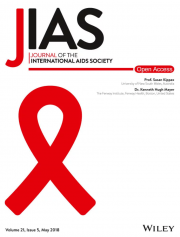Posted on February 20, 2017
Source: Journal of the International AIDS Society

Client uptake of safer conception strategies: implementation outcomes from the Sakh'umndeni Safer Conception Clinic in South Africa
Schwartz SR, Bassett J, Holmes CB, Yende N, Phofa R, Sanne I, Van Rie
INTRODUCTION:
Implementation of safer conception services for HIV-affected couples within primary healthcare clinics in resource-limited settings remains limited. We review service utilization and safer conception strategy uptake during the first three years of Sakh'umndeni, which is a safer conception clinic in South Africa.
METHODS:
Sakh'umndeni is located at Witkoppen Health and Welfare Centre, a high-volume primary healthcare clinic in northern Johannesburg. Men and women desiring to conceive in less than or equal to six months and in relationships in which one or both partners are living with HIV are eligible for safer conception services. Clients receive a baseline health assessment and counselling around periconception HIV risk reduction strategies and choose which strategies they plan to use. Clients are followed-up monthly. We describe client service utilization and uptake and continuation of safer conception methods. Factors associated with male partner attendance are assessed using robust Poisson regression.
RESULTS:
Overall 440 individuals utilized the service including 157 couples in which both partners attended (55%) and 126 unaccompanied female partners. Over half of the couples (55%) represented were in serodiscordant/unknown status relationships. Higher economic status and HIV-negative status of the women increased male partner involvement, while HIV-negative status of the men decreased male involvement. Regarding safer conception strategies, uptake of antiretroviral therapy initiation (90%), vaginal self-insemination among partnerships with HIV-negative men (75%) and timed condomless intercourse strategies (48%) were variable, but generally high. Overall uptake of pre-exposure prophylaxis (PrEP) was 23% and was lower among HIV-negative men than women (7% vs. 44%, p < 0.001). Male medical circumcision (MMC) was used by 28% of HIV-negative men. Over 80% of clients took up at least one recommended safer conception strategy. Continuation of selected strategies over attempted conception attempts was >60%.
CONCLUSIONS:
Safer conception strategies are generally used by clients per recommendations. High uptake of strategies suggests that the proposed combination prevention methods are acceptable to clients and appropriate for scale-up; however, low uptake of PrEP and MMC among HIV-negative men needs improvement. Targeted community-based efforts to reach men unlinked to safer conception services are needed, alongside streamlined approaches for service scale-up within existing HIV and non-HIV service delivery platforms.